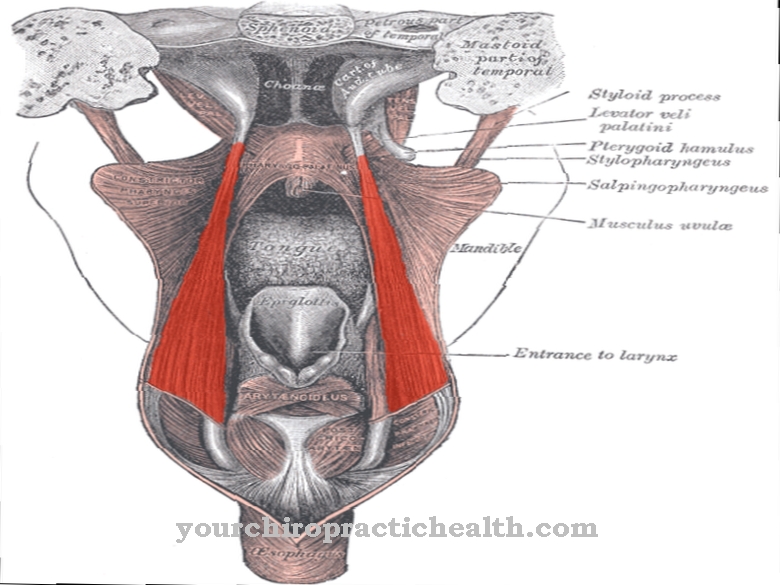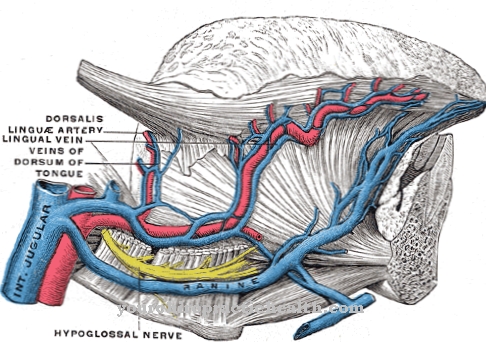At a Trophoblast it is a layer of cells. It forms the outer boundary of the blastocyst and is responsible for nourishing the embryo.
What is the trophoblast?
The trophoblast is a layer of cells and represents the outer boundary of the germinal vesicle in humans. Together with the placenta, it is necessary for the care of the embryo during pregnancy. During pregnancy, mother and child are dependent on certain substances (e.g. folic acid). This need is increased during pregnancy. In the early stages of pregnancy, the trophoblast also nourishes the embryo with these important substances.
Anatomy & structure
On the 5th to 12th day after fertilization, the trophoblast forms from the blastomeres. Its cells grow into the lining of the uterus, where they then attach themselves. In this way he mediates the implantation of the embryo. and later differentiates into the cytotrophoblasts (inner cell layer) and the syncytriotrophoblasts (outer cell layer). In the course of pregnancy, parts of the pericarp and the embryonic part of the placenta (placenta) develop from these layers.
There is basically no permanent integration of the trophoblast cells into the maternal or fetal organism. They only transfer between the two biological systems. Although these are so-called semi-allogeneic cells, the maternal immune system does not recognize them. In medicine, it has not yet been possible to conclusively clarify how immunological tolerance of these biological mechanisms occurs. Factors such as the development of special MHC class 1 antigens and the lack of MHC class 2 antigens are conceivable.
Function & tasks
The trophoblast is the outer wall of the germinal vesicle in humans. In medical terminology, one speaks of a blastocyst. The production of trophoblasts is regulated by the woman's cycle. It consists of a layer of flat and polygonal cells. These are also known as cytotrophoblast cells and correspond to an early chorionic epithelium.
This is the outer layer of the fruit envelope that surrounds the embryo. The term chorionic epithelium can be derived from the Greek term for villi skin. It is the task of the trophoblast to establish contact with the lining of the uterus when the egg is implanted. Following this process, the trophoblast is converted into a spongiotrophoblast. It is regarded as the so-called nutritional organ of the germ and can be compared purely externally with a sponge.
With the help of enzymes, the mucous membrane of the uterus is softened by the trophoblasts, which allows them to become lodged in it. The trophoblast thus supports the development of the embryo in the womb. The trophoblast cells develop from a single egg cell.
Diseases
Normally the placenta and the membranes develop from the trophoblasts during pregnancy. However, complications can also arise. In women of childbearing age, benign or malignant tumors incorrectly develop from certain parts of the tissue of the fertilized egg cell during or after pregnancy.
A benign trophoblast tumor is a partial or complete mole of the bladder. This is a disorder of the child's development in the early stages of pregnancy. It occurs when the fertilization of an egg differs from the norm. The cells of the trophoblast multiply in an uncontrolled manner, although they should actually form membranes and placenta. This creates vesicles the size of a grape and arranged in the shape of a grape, which contain a light-colored liquid. The embryoblast, i.e. the future child, atrophies so that there is no normal pregnancy.
Both the partial and the complete mole of the bladder are located exclusively in the uterus, without invading other tissue. According to statistics, a mole develops in around 1 in 2,000 to 3,000 pregnancies.
A partial mole of the bladder is spoken of in medicine when the egg cell is fertilized by two sperm cells instead of just one sperm cell. The formation of amniotic fluid and the development of a child in whom a heartbeat can sometimes be detected. However, the cells of the trophoblast divide as often and as they want, and not just as often as necessary for the development of the placenta and membranes. Most of the time, a miscarriage occurs between the 4th and 6th month of pregnancy.
If one speaks in medicine of a complete mole of bladder, the egg is fertilized, but the mother's genetic information is missing. There is therefore no development of a child. Here, too, the cells of the trophoblast divide as often and as they want and not just as often as necessary. Miscarriages are common here in the first few weeks of pregnancy.
The so-called chorionic carcinoma is a malignant trophoblast tumor. An invasive mole may also develop. Basically, after a pregnancy, a miscarriage or an ectopic pregnancy, trophoblast residues remain in the uterus. For reasons that have not yet been clarified, it can happen that these divide in an uncontrolled manner and implant in the mucous membrane of the uterus. It can spread throughout the body via blood and lymph fluid and thus lead to the formation of metastases. In most cases, malignant trophoblast tumors develop from a complete mole of the bladder. The result is either an invasive mole (destructive mole) or chorionic carcinoma (chorionic epithelioma).
An invasive mole can develop from 10 to 15 out of 100 complete moles, and it can also occur in 1 in 15,000 pregnancies. If left untreated, it can develop into chorionic carcinoma. As a rule, it occurs primarily after molar muscles, but rarely also after normal pregnancies, ectopic pregnancies or miscarriages.
According to statistics, 2 to 3 in 100 moles and 1 in 40,000 pregnancies develop chorionic cancer. The first signs of this very aggressive and rapidly growing tumor appear either immediately after birth or, very often, many years later. Metastases often form in the lungs, brain, liver or even in the bones.

























.jpg)

.jpg)
